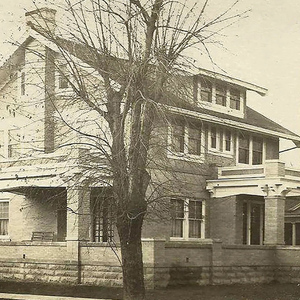*
I need to attach 2X4 screeds to a cement floor. What would you recommend? I like the idea of being able to easily remove a Tapcon, but some have suggested that they are a big fat pain in the pa-tooty to use and don’t hold well. What’s the real deal?
If you recommend Tapcons, what is the process of attaching a 2X4 to a cement floor–do you hammer drill through the 2X4? Dumb questions, I know, but consider the source.



















Replies
*
we use both... my idea is you use a ramset wherever you can .. and you use a tapcon where you can't..
and you use concrete nails or cut nails if you can do that .. what ever is easiest and appropriate....
*I have to admit that I really hate ramset style. For fastening a bottom plate, they work okay, but it always seems that I'm getting a spall when I least want it. Never can quite tell if that spot of concrete has a rock in it or is old or whatever. For firring, I don't know how you can use ramset--doesn't that little head sticking up make it hard to attach anything? Anyhow, I've had great luck, and far cheaper than Tapcon, by using McFeely's square drive concrete screws. I can get about a 100 for the price of 25 Tapcons, they almost always work, and have never had a problem with pullout. As for time issues, you just work that into the quote.
*Boys you know that you can use a masonry bit that is one hair smaller than a 3 1/2" common, drill your hole as you would for a tapcon, drive the nail through the 2 by 4 and into the concrete. Holds like hell and cheaper than concrete nails.Gabe
*Gabe I did that in steel pipe could not get the nail out. I saw a concrete contractor drive 16s through a 2x4 into day old concrete to set forms .
*Don,If you want to do this for forms, you use a drill bit the size of your nail and insert a tie wire into the hole prior to driving in the nail.This way you can pull the nails out when you strip the forms.Gabe
*That's a good tip Gabe.Alot of times we frame our basement walls a day or two after the slab is poured and we use hand or gun commons to pin the walls to the floor, never tried to predrill in the cured stuff though.Back to the original question.You can tapcon almost as fast as ramset if you're set up properly. I have a sleeve that fits over a hex shank sds bit that holds either a hex or phillips bit for driving the tapcons. Its kind of a masonry drill and drive thing. Use it with a electro-pneumatic hammer drill and you're in business.As to when to use tapcons, I think they work better in materials/applications where withdrawal can be a problem. Generally you can anchor them deeper that a non-threaded fastener I think.
*Be very careful with concrete floors in basements - ocassionally there are thin spots where the floor is not as thick as it should be. This is particularly true in houses built 50, 60, 70 years ago. If you drill the floor and go too far, you will go through the floor and if the area is prone to termites, you are giving the critters an excellent chance to enter the house. I've replaced a several stud wall partitions in basemnets with termite damage and the critters came up through the anchor holes that accidently (or on purpose) went through the concrete floor. Powder actuated fastners are not as prone to this unless you use very long ones - I would use relatively shot ones - say 2 and half inches but use them frequently. If they do their job, they will fuse with the concrete floor making a firm connection. If you do accidently plunge through the floor, talk to an exterminator about what to pour down the hole; Chlorodane was once a commonly used termite killer but it is now banned so you would need professional advice from an exterminator.
*
I need to attach 2X4 screeds to a cement floor. What would you recommend? I like the idea of being able to easily remove a Tapcon, but some have suggested that they are a big fat pain in the pa-tooty to use and don't hold well. What's the real deal?
If you recommend Tapcons, what is the process of attaching a 2X4 to a cement floor--do you hammer drill through the 2X4? Dumb questions, I know, but consider the source.